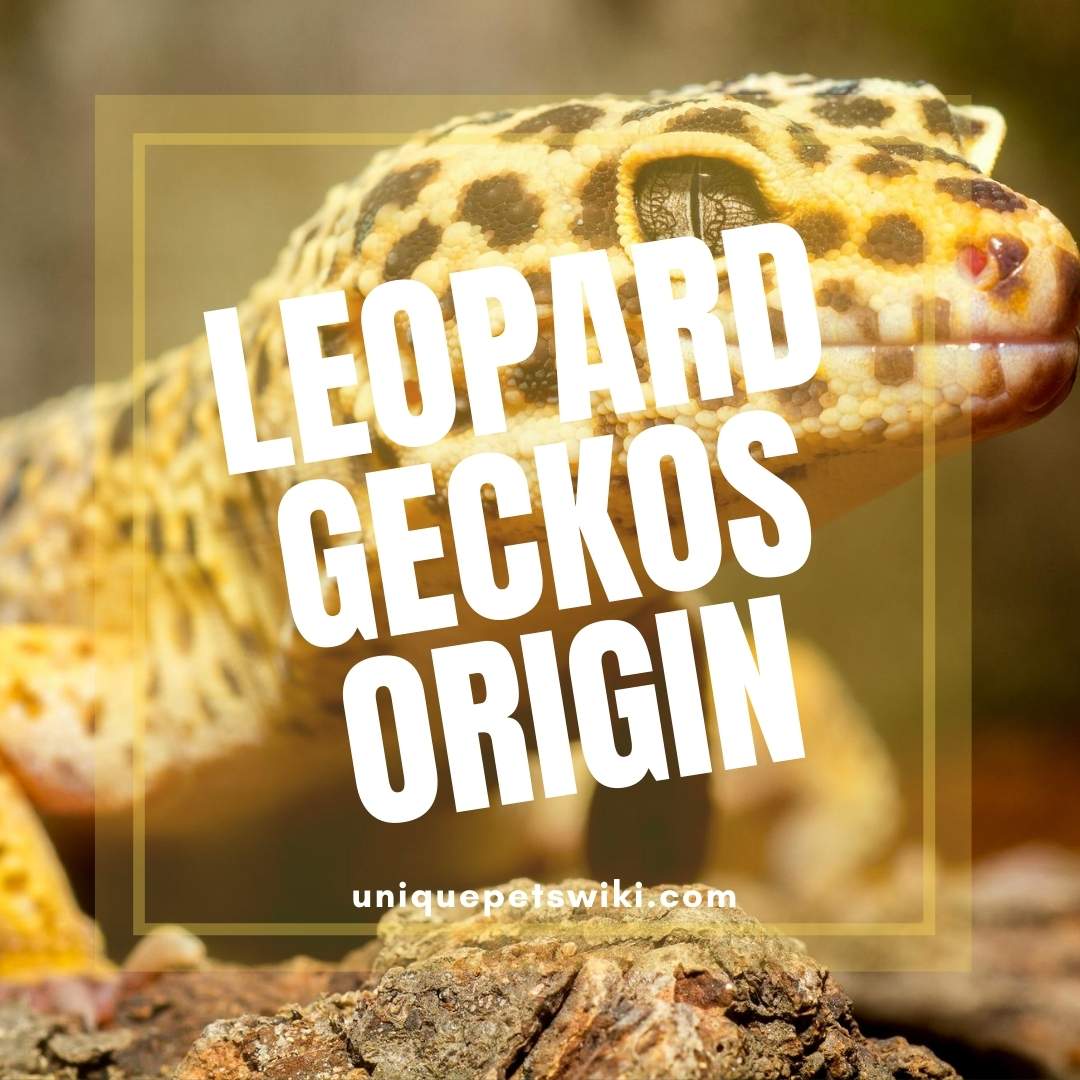Leopard geckos are a perfect reptile choice for beginner and expert hobbyists. They are relatively easy to keep and maintain, and they have a long life span. However, most of the leopard geckos kept as a pet are captive bred and not taken from the wild.
This fascinating pet has been kept as a pet for over 30 years. A good leopard geckos owner needs to know where they originate from in order to keep them in a home that mimics their native homes.
Leopard geckos are native to dry and semi-arid areas like Iraq, Afghanistan, northwestern India, and Iran. In this article, you will learn more about where leopard geckos originate from, why they are a good pet, their lifespan, and whether they can be handled.
Contents
Leopard geckos As pets
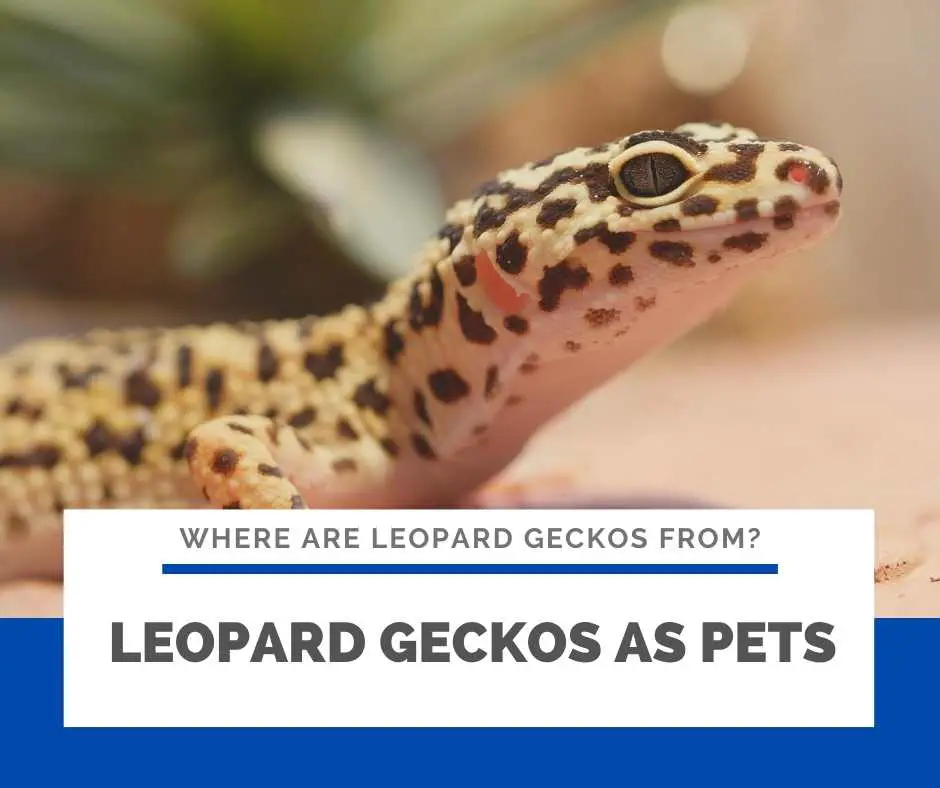
Leopard geckos are fantastic pets that you can keep at your home. They have a docile temperament, which means they are happy to be held by both children and adults without making any fuzz.
Another thing is that leopard gecko is not very demanding, and it is easy to create a perfect home for them. Furthermore, leos are good looking animals, and you will fall in love with them once you see them. They are also available in different color morphs so you can pick one that you like.
The best thing is that leopard gecko is not a fussy eater and will take insect varieties that you give them.
Another exciting thing is that they have a long lifespan and will stay for about 20 years if you care for them properly. Furthermore, they will easily breed if you keep them under ideal conditions.
Where Are Leopard Geckos From?
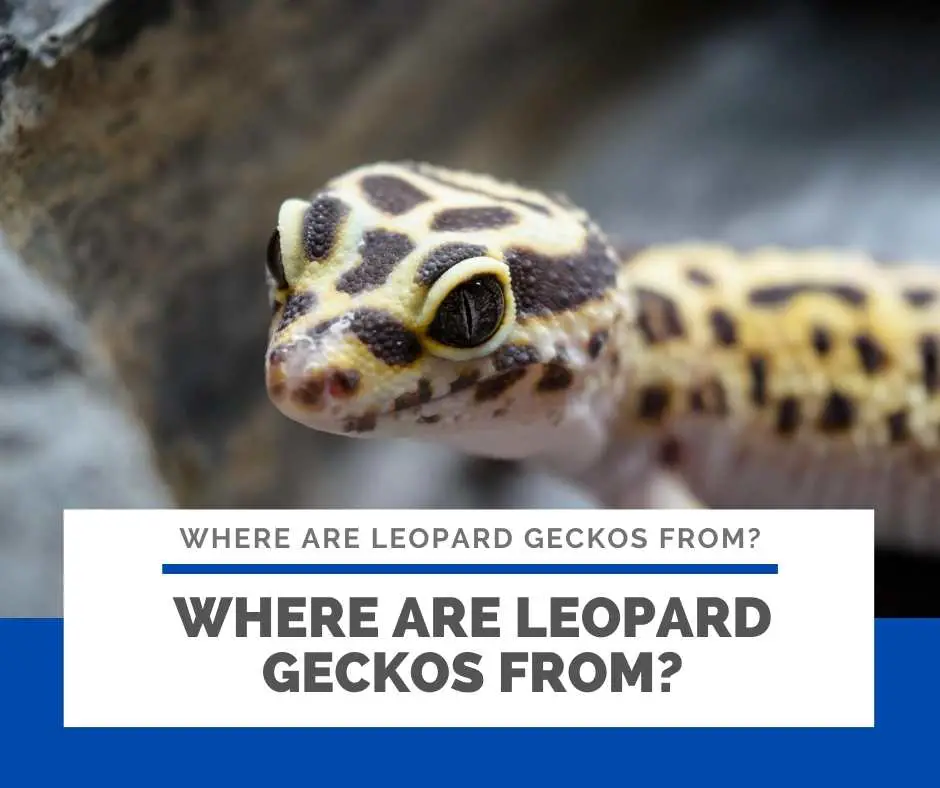
The common leopard geckos are natives of Southeastern Afghanistan, Iraq, Pakistan, Iran, and northwestern India. You will find them living in rocky areas, dry grassland, and desert areas.
Leopard gecko loves staying in semi-deserts, and arid grasslands and their habitat is characterized by rocks, coarse grasses, sandy-gravel, hard clay, and drought-resistant shrubs.
In their natural habitat, leopard geckos’ bumpy and spotted skin provides excellent camouflage against the substrates.
Since they stay in a semi-desert region with limited food and water options, leopard geckos have magnificent adaptation skills to stay alive. This also explains why they are hardy in captivity.
How Long Do Leopard Geckos Live In The Wild?
Leopard geckos can live for around 10-15 years in the wild. However, they can live for about 10-20 years in captivity if you care for them very well. Although they prefer living alone, they can be handled if done very carefully.
Understand Leopard Geckos’ Habitat With Their Natural Wild
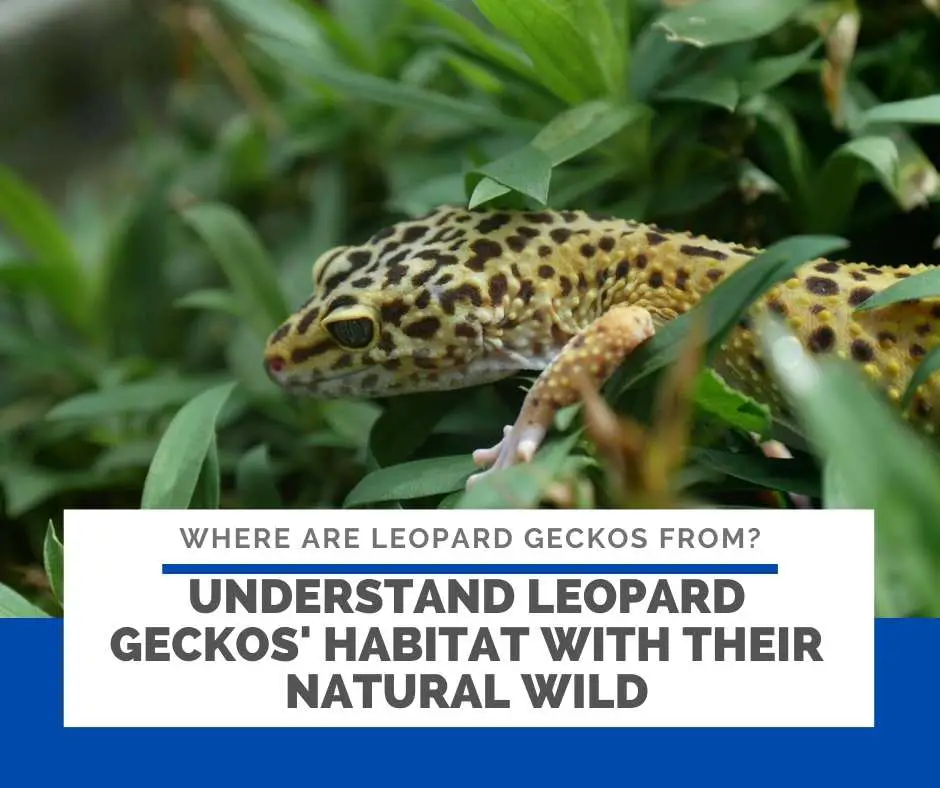
Habits And Lifestyle Of Leopard Geckos In The Wild
Leopard geckos are solitary animals and prefer staying alone. They are crepuscular animals, and their movement is limited to burrows and shaded areas during the day. However, they are more active at dawn and dusk when the temperature is favorable.
During the winter, the habitat of leopard geckos in the wild is quite low, forcing the animals underground into a semi-hibernation. This process is known as brumation, and leopard geckos will live on their body’s fat reserves.
Furthermore, the predators of leopard gecko in the wild are snakes, foxes, and large reptiles. However, they escape from their predators at night with their keen sense of hearing and sight. Their skin also serves as camouflage from predators.
In the day, they will stay hidden in underground holes and burrows to avoid the heat and avoid predators. Although leos are not vocal creatures, they will bark and squeak if they are stressed.
Setting Up A Leopard Gecko Enclosure
It is very simple to set up a naturalistic enclosure for your leopard gecko. You will need to buy a box or two slate tiles for creating a natural feel for the substrate in your leopard gecko’s tank. You can also get a fake rock design for the design.
However, you will need to cover 40% of their tank with a rock for a more naturalistic look, while 10-20% is covered with live plants.
When creating a naturalistic leopard gecko enclosure with a live plant, you can follow these steps:
- Mix fine-grained play sand, potting soil, and peat moss together at 1:1:1 and place them at the tank’s bottom. This serves as a drainage for the tank.
- Add the plants into the tank.
- Cover the drainage material with sand/soil mix.
- Put rocks and wood decorations in the tank.
- Fill the remaining gaps with fine play sand.
Note: Since 60% of the tank will consist of plants, tile, and wood. You will need to cover most of the sand to reduce sand ingestion risk.
Ideal Temperature
Leopard gecko cannot produce their own body heat; this means you need to provide them with a supplemental heat source. Their tank needs to be around 80-85 degrees Fahrenheit during the day and around 70 degrees during the night.
You will also need to provide them with a basking area with a temperature range between 88-90 degrees Fahrenheit.
Light
When setting up your gecko’s habitat, you will need to recreate natural light cycles for their optimal growth. You can place black heat lamps and red lamps in their enclosure for day and night.
Humidity
Leopard gecko needs a specific humidity requirement for proper shedding and to prevent dehydration. However, the high humidity level can make your leos susceptible to infections. The ideal humidity level for your leos is between 40% or lower.
Petting Leopard Gecko – Do They Like To Be Handled?

The best thing about leopard gecko is that they like being handled. However, you need to be careful when handling them but ensure you hold them tightly, so they don’t wriggle free.
You should also make sure that you handle your gecko in a safe area and supervise your children while handling them. This is to prevent dropping the gecko from a height that may lead to death or if you accidentally grab your leopard gecko by the tail and drop their tail.
Note: Ensure you wash your hands before and after you handle your leos.
Wrapping Up
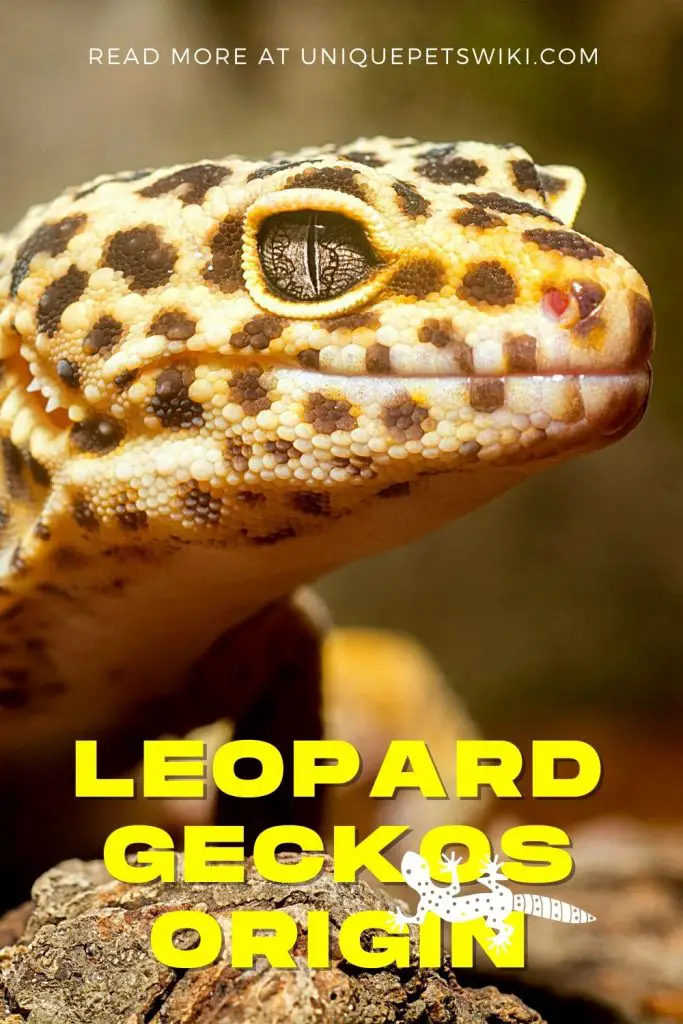
Most hobbyists know that leopard geckos are mind-blowing pets that you can keep. They originate from dry and semi-arid areas like Iraq, Afghanistan, northwestern India, and Iran. By knowing where leopard gecko come from, you can safely build a tank for raising them successfully.
